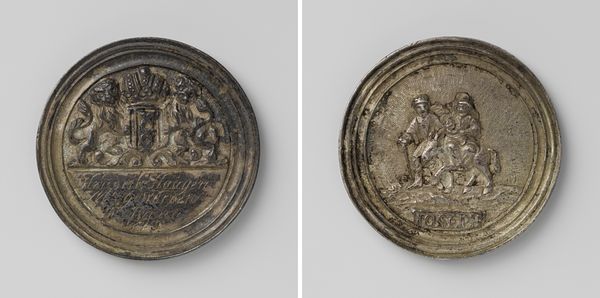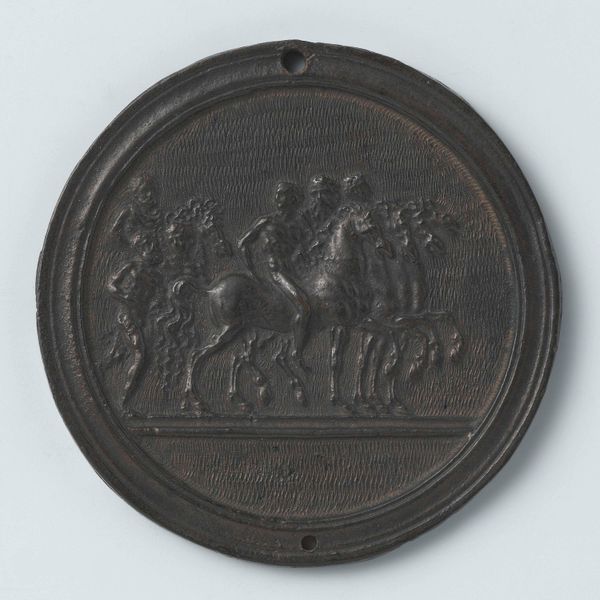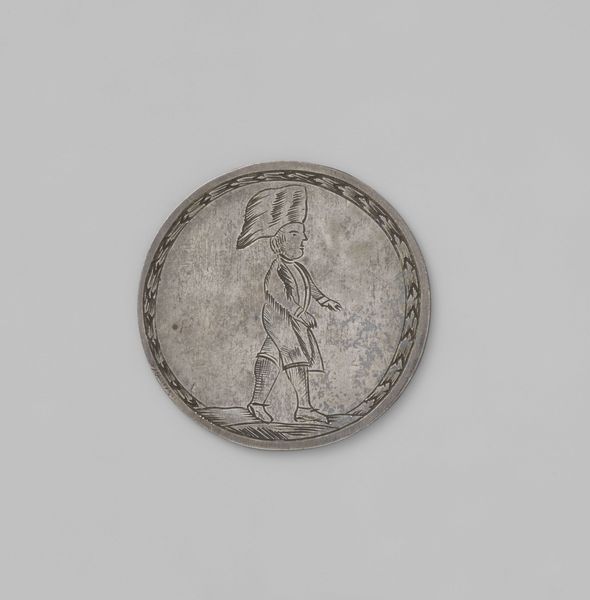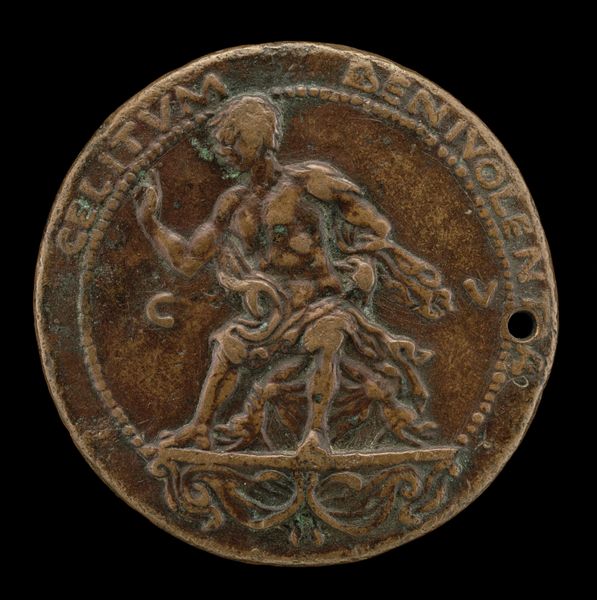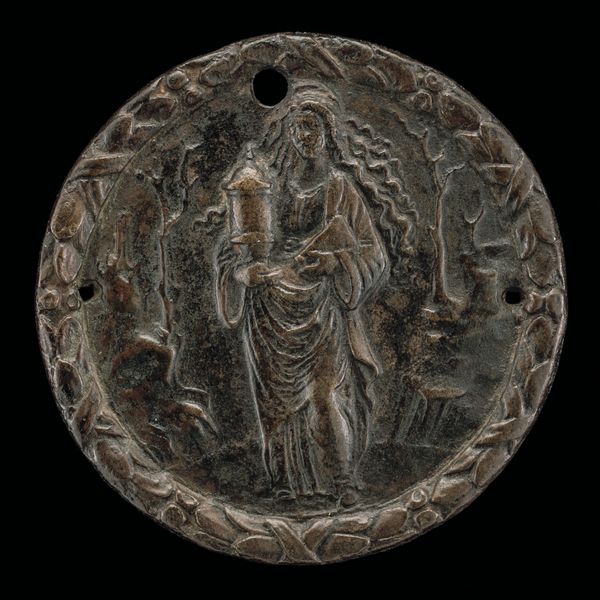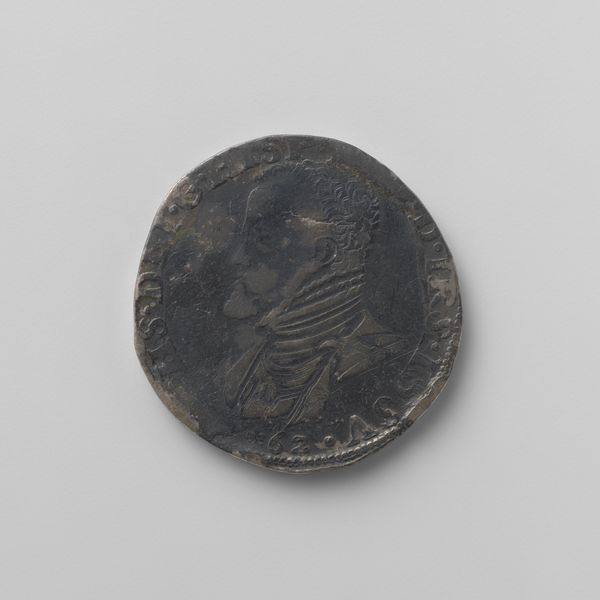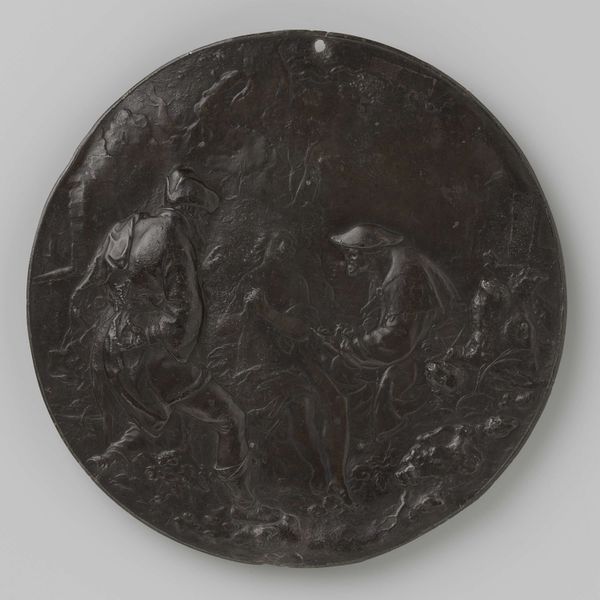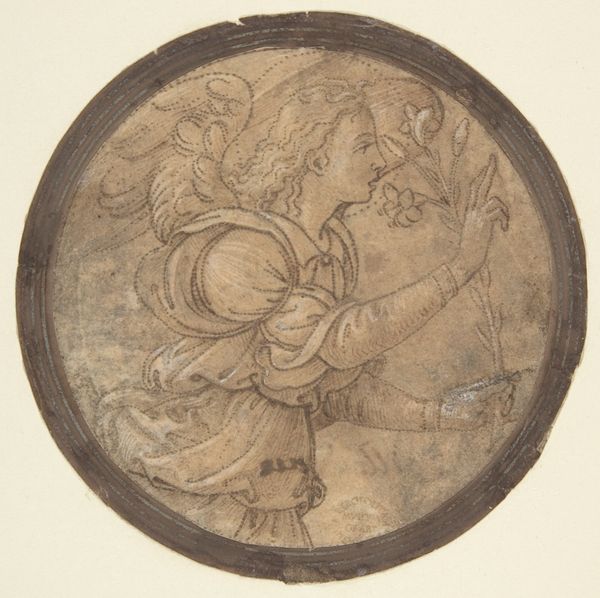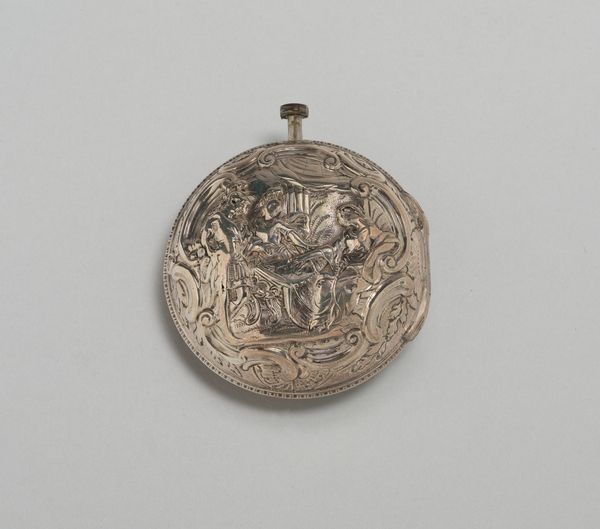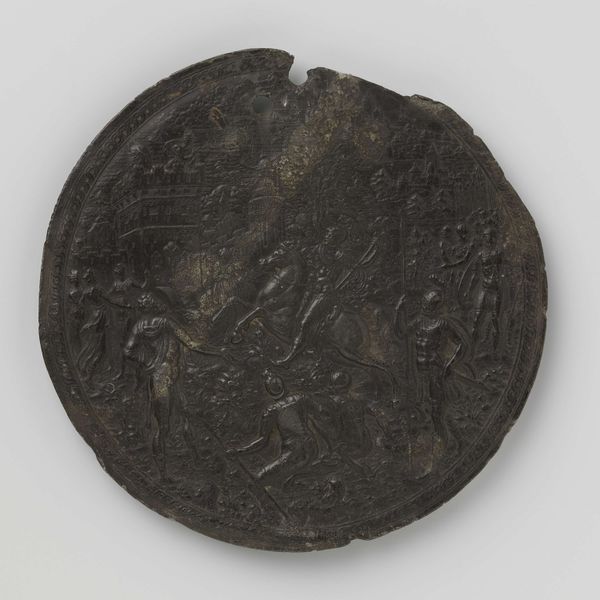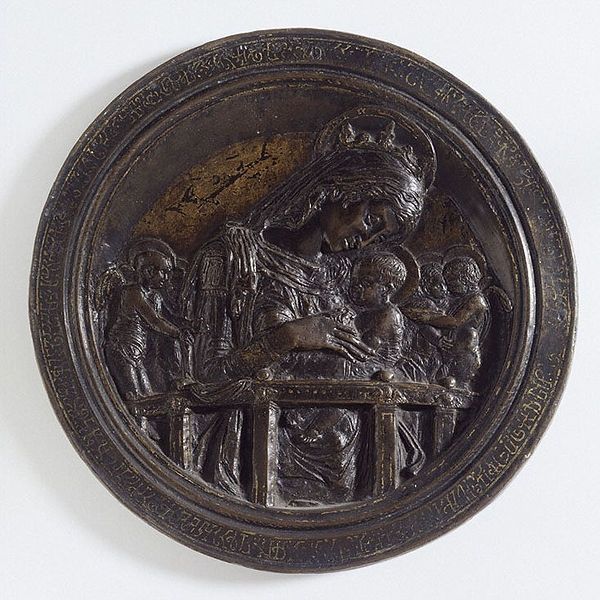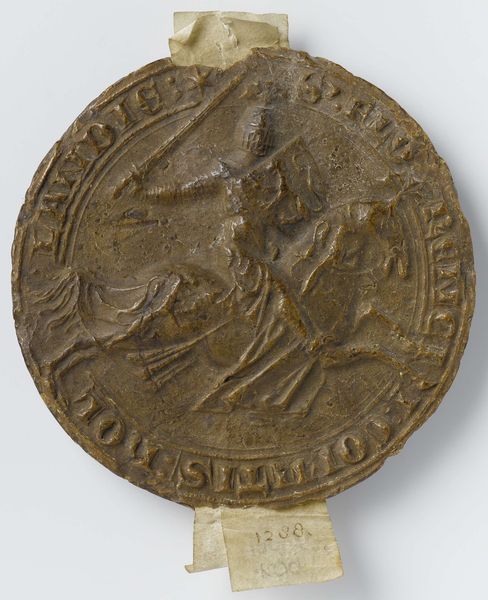
carving, metal, relief, bronze, sculpture, marble
#
carving
#
metal
#
sculpture
#
relief
#
bronze
#
sculptural image
#
figuration
#
sculpture
#
carved
#
ceramic
#
marble
#
italian-renaissance
Dimensions: diameter 8.7 cm, diameter 12.4 cm
Copyright: Rijks Museum: Open Domain
Editor: Here we have "Merchandise," a bronze relief carving created around 1590-1596 by an anonymous artist, currently housed in the Rijksmuseum. The circular form and the figures within it create an interesting contrast of sharp detail within a rounded, soft edge. What can you tell me about this work's composition? Curator: The composition hinges on the interplay of circular forms. Note how the central scene, enclosed within its circular frame, creates a world unto itself, contrasting against the stark geometry of its backdrop. Consider the distribution of figures. Do you observe a deliberate asymmetry that challenges the classical ideals of balance and harmony? Editor: I see what you mean. It's not perfectly symmetrical. What effect does that asymmetry create? Curator: The slight imbalance contributes to a dynamic tension within the composition. It disrupts a static reading and invites the eye to explore the nuances of the relationships between the figures, between figure and ground. Observe how the artist’s use of light and shadow further accentuates the texture of the bronze, almost giving it a tactile quality. What do you make of that textural emphasis? Editor: It almost makes the figures pop out. The contrast between the dark, almost blackened bronze and the highlights creates depth. It emphasizes the material quality. Curator: Precisely. The artist's manipulation of texture isn't merely decorative; it's integral to the articulation of form and space. It brings the work to life in a tangible way. Editor: I had not noticed the level of detail. This examination into the formal aspects is illuminating. Thank you. Curator: The beauty of formal analysis lies in its ability to reveal the hidden architecture of a work, enriching our understanding and appreciation.
Comments
rijksmuseum about 2 years ago
⋮
Among the merchandise intended for the Asian market were pewter salt-cellars and a splendidly ornamented ewer. The pewter medallions in wooden frames were meant to serve as wall decorations.
Join the conversation
Join millions of artists and users on Artera today and experience the ultimate creative platform.
